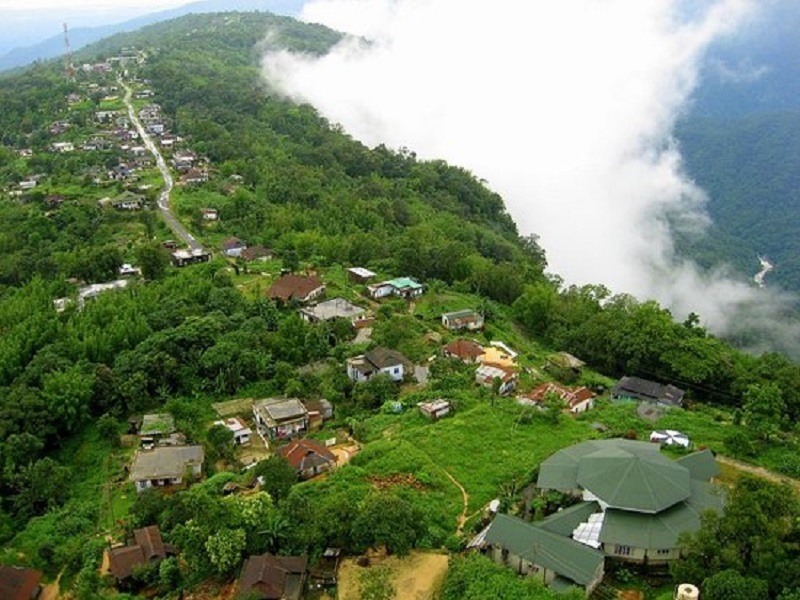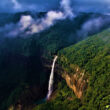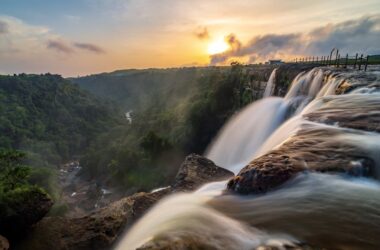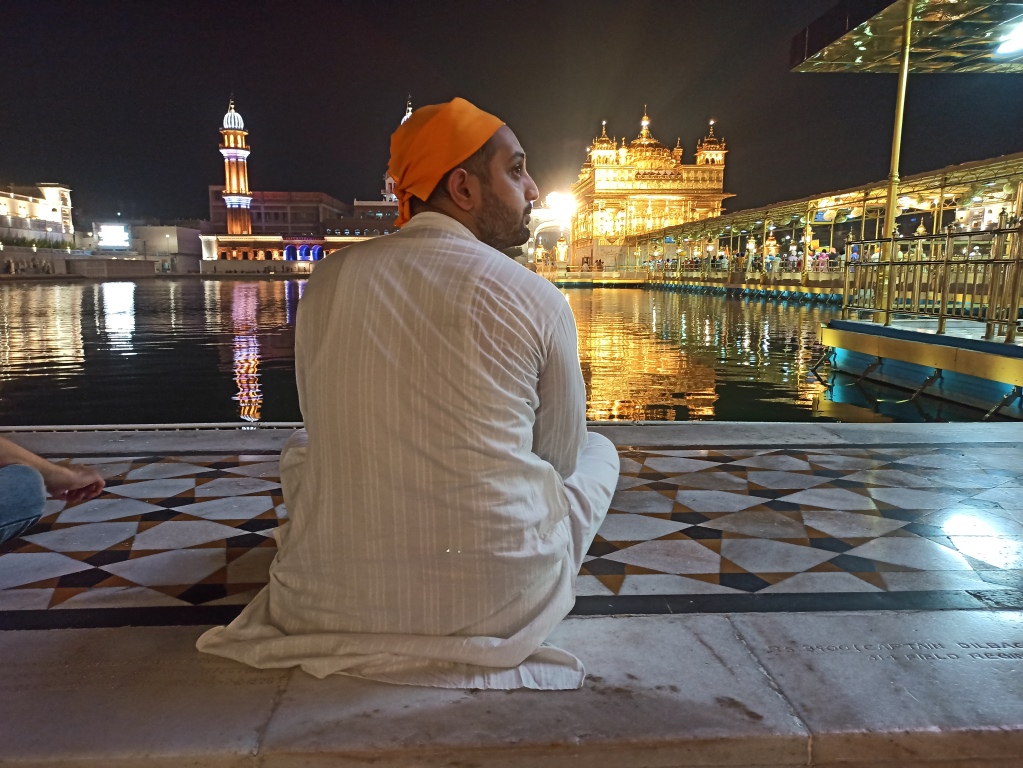Cherrapunji, located in the northeastern state of Meghalaya in India, is renowned for its unique weather patterns. Known as the “wettest place on earth,” this fascinating destination experiences exceptional rainfall throughout the year. In this article, we will delve into the intriguing weather conditions of Cherrapunji, exploring its rainfall, climate, and the impact it has on the region.
Table of Contents
- Understanding Cherrapunji’s Geographic Location
- The Rainfall of Cherrapunji
- The Climate of Cherrapunji
- The Impact of Cherrapunji’s Weather
- Cherrapunji: A Tourist’s Paradise
- Exploring the Natural Wonders of Cherrapunji
- The Cultural Significance of Cherrapunji
- Cherrapunji’s Weather and Local Livelihoods
- Cherrapunji’s Weather in Popular Culture
- Cherrapunji’s Weather: A Scientific Phenomenon
- Ecotourism in Cherrapunji
- Cherrapunji Weather: Tips for Visitors
- Cherrapunji’s Future Weather Patterns
- Sustainable Practices in Cherrapunji
- Conclusion
1. Understanding Cherrapunji’s Geographic Location
Situated in the East Khasi Hills district of Meghalaya, Cherrapunji lies on a plateau amidst the breathtaking Khasi Hills. It is nestled in the southern slopes of the Himalayas, around 55 kilometers south of Shillong, the state capital.
2. The Rainfall of Cherrapunji
Cherrapunji holds the distinction of receiving the highest recorded rainfall in the world. The region experiences heavy rainfall due to its geographical features, including its proximity to the Bay of Bengal and the Himalayas. The southwest monsoon winds carry moisture-laden clouds that unleash their downpour upon the Khasi Hills, resulting in an astonishing average annual rainfall of over 11,000 millimeters.
3. The Climate of Cherrapunji
Cherrapunji falls under the humid subtropical climate zone, characterized by high humidity and moderate temperatures. The summer months, from March to June, are warm and pleasant, with temperatures ranging from 20 to 30 degrees Celsius. The monsoon season lasts from June to September, bringing intense rainfall and creating a lush green landscape. The winter months, spanning from October to February, are relatively dry and cooler, with temperatures dropping to around 10 degrees Celsius.
4. The Impact of Cherrapunji’s Weather
The heavy rainfall in Cherrapunji significantly influences the local ecosystem and geological formations. The abundant water supply sustains a diverse range of flora and fauna, including unique species of orchids, ferns, and mosses. The region is also home to several waterfalls, such as the iconic Nohkalikai Falls, which cascade down from the surrounding hills.
5. Cherrapunji: A Tourist’s Paradise
Cherrapunji’s extraordinary weather and breathtaking landscapes make it a popular destination for nature enthusiasts and adventure seekers. Visitors are captivated by the lush green valleys, mist-covered hills, and pristine waterfalls that adorn the region. The stunning living root bridges, formed by training the roots of rubber trees, are a testament to the ingenious craftsmanship of the local Khasi tribes.
6. Exploring the Natural Wonders of Cherrapunji
Beyond its rainfall and scenic beauty, Cherrapunji boasts numerous natural wonders waiting to be explored. The Mawsmai Caves, a network of limestone caves, offer an exhilarating underground experience. The Seven Sisters Falls, a collection of seven cascading waterfalls, present a mesmerizing sight during the monsoon season. The Dainthlen Falls, with its legend of a giant snake, and the double-decker living root bridge in Nongriat village are also popular attractions.
7. The Cultural Significance of Cherrapunji
Cherrapunji is not only rich in natural beauty but also possesses cultural significance. The Khasi tribes, the predominant ethnic group in the region, have a deep spiritual connection with their land. They celebrate their traditions and festivals with great enthusiasm, showcasing their unique music, dance forms, and rituals. The Nongkrem Dance Festival, held annually, is a vibrant celebration of the Khasi culture, featuring colorful traditional attire and rhythmic dance performances.
8. Cherrapunji’s Weather and Local Livelihoods
The remarkable weather conditions in Cherrapunji have a profound impact on the local livelihoods. The abundant rainfall supports agriculture, with terraced fields spread across the hillsides. The Khasi people cultivate crops such as rice, ginger, and betel leaf. Additionally, the rainwater is harvested to meet the water needs of the region during the dry winter months.
9. Cherrapunji’s Weather in Popular Culture
Cherrapunji’s unique weather has captivated the imagination of people around the world, finding its way into various forms of popular culture. It has been referenced in literature, music, and movies, often portraying the mystique and charm associated with the region. Writers and poets have drawn inspiration from its enchanting landscapes and dramatic weather patterns.
10. Cherrapunji’s Weather: A Scientific Phenomenon
Scientists and meteorologists have long been intrigued by Cherrapunji’s exceptional rainfall. The region’s location, topography, and proximity to the monsoon winds contribute to this meteorological wonder. Ongoing research aims to understand the intricate mechanisms behind heavy precipitation and its implications for global weather patterns.
11. Ecotourism in Cherrapunji
With its rich biodiversity and pristine landscapes, Cherrapunji has become a hub for ecotourism. The local communities have embraced sustainable practices to preserve the environment while offering immersive experiences to visitors. Ecotourism initiatives focus on responsible tourism, emphasizing conservation, community participation, and the promotion of traditional arts and crafts.
12. Cherrapunji Weather: Tips for Visitors
If you’re planning a visit to Cherrapunji, it’s essential to be prepared for the unique weather conditions. Here are some tips to make the most of your trip:
- Pack appropriate rain gear, including waterproof clothing, umbrellas, and sturdy footwear.
- Carry a reliable camera to capture the stunning landscapes and waterfalls.
- Stay updated with the weather forecast to plan your activities accordingly.
- Explore the local cuisine, savoring traditional Khasi delicacies such as Jadoh (rice with meat), Tungrymbai (fermented soybean), and Pukhlein (sweet rice bread).
13. Cherrapunji’s Future Weather Patterns
As climate change continues to impact our planet, Cherrapunji’s weather patterns may undergo further transformations. While the region’s reputation as the wettest place on earth remains intact, it is crucial to monitor the long-term effects of climate change on the rainfall and overall climate of Cherrapunji.
14. Sustainable Practices in Cherrapunji
To ensure the preservation of Cherrapunji’s natural wonders, sustainable practices are essential. Efforts are being made to promote responsible tourism, minimize ecological impact, and support local communities. Conservation projects focus on reforestation, waste management, and the protection of endangered species.
15. Conclusion
Cherrapunji’s weather has captivated the world for its extraordinary rainfall and stunning landscapes. This unique destination showcases the harmony between humans and nature, with its rich cultural heritage and sustainable practices. As you immerse yourself in the charm of Cherrapunji, embrace the opportunity to witness the wonders of the wettest place on earth.
Similar Articles
FAQs
1. Is Cherrapunji really the wettest place on earth?
Yes, Cherrapunji holds the record for receiving the highest average annual rainfall on Earth.
2. When is the best time to visit Cherrapunji?
The monsoon season, from June to September, offers the most dramatic experience of Cherrapunji’s rainfall and lush green landscapes. However, other seasons provide pleasant weather for exploration as well.
3. Are there any accommodations available in Cherrapunji?
Yes, Cherrapunji offers a range of accommodations, including hotels, guesthouses, and homestays, allowing visitors to choose according to their preferences and budget.
4. Are there any safety precautions to consider while visiting Cherrapunji?
While Cherrapunji is a safe destination, it’s advisable to follow standard travel precautions. Be mindful of the weather conditions, stay on designated trails during hikes, and respect the local culture and traditions.
5. Can I witness the living root bridges in Cherrapunji?
Yes, Cherrapunji is famous for its living root bridges, particularly the double-decker bridge in Nongriat village. These unique structures are a sight to behold and can be visited with the assistance of local guides.









